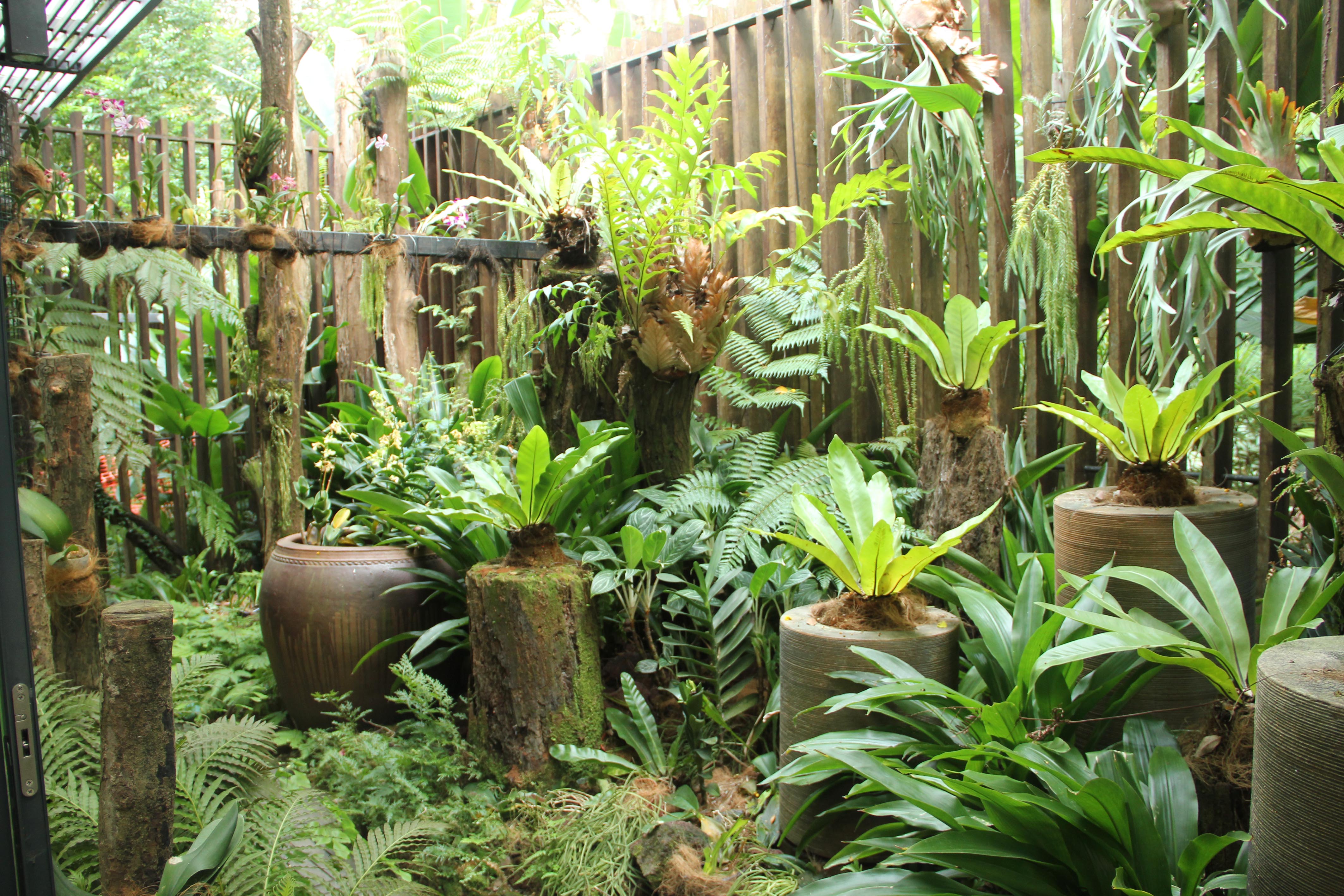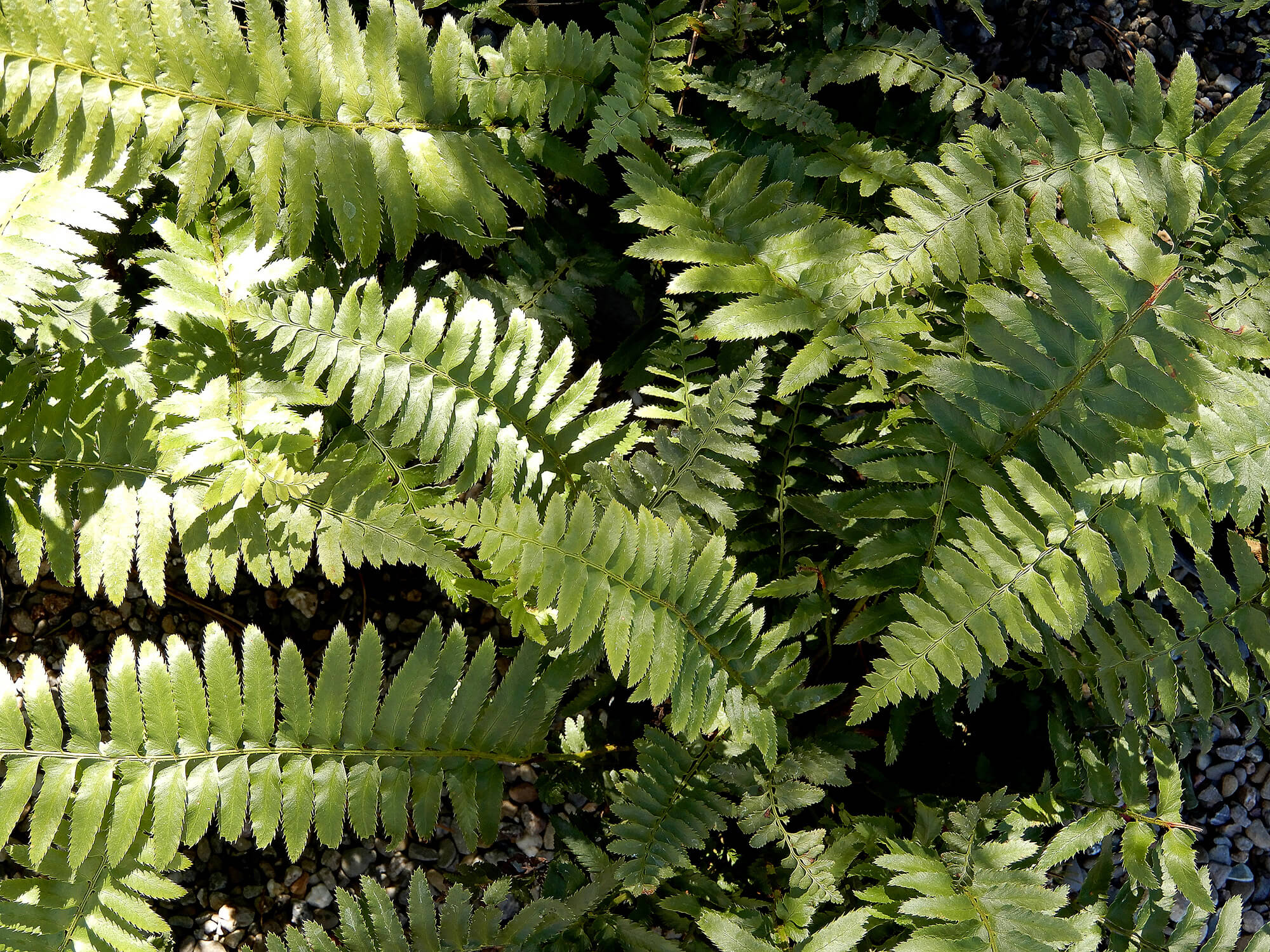
21 Best Ferns for Your Garden Shade plants, Ferns garden, Garden shrubs
Soil: Ferns sink their thirsty roots into deep, friable soil rich in organic matter. Heavy clay soils are not hospitable unless amended with compost. A neutral or slightly acidic soil is preferable for most ferns; aim for a pH between 6.0 and 7.0. Fertilizer: Beyond compost added to the soil, ferns do not need fertilizer.

Creating A Fern Garden Fasci Garden
Male fern - The male fern is an evergreen fern that is shaped like a vase and will grow up to 5 feet (1.5 m.). This interesting fern likes light to full shade and very wet soil. How to Take Care of Ferns Ferns are extremely forgiving and have an incredibly strong survival instinct.

mixed bed ferns, hosta, iris Hostas, Shade plants, Ferns garden
Hardy Gloxinia Care. Plant hardy gloxinia fern in rich, well-drained soil, but first, work the soil to a depth of at least 8 inches (20 cm.) to accommodate the long taproot. If your soil is poor, dig in a generous amount of manure or compost before planting. Growing flowering ferns can be done by seed, or by planting small starter plants from a.

Garden Ferns How To Grow And Care For A Fern Garden Outdoors
Looking for a plant for a shady, damp spot in your garden? Ferns are your best friend in this situation as they grow where other plants often struggle. They might not offer up any flowers, but their fronds (large divided leaves) add texture, color, and interest year-round.

Outdoor Ferns Berkeley Horticultural Nursery Berkeley Horticultural
Easy to grow and maintain. Plants last for many years. Ferns like shade and soil improved with organic matter. Many are evergreen. Plant in autumn or spring for best establishment. Cut back deciduous types in winter before new spring growth starts. Make new plants by dividing established plants or by growing from spores.

Hydrangea and ferns 1000 Hydrangea landscaping, Hydrangea garden
Ferns include nearly 12,000 species within a unique category of plants that do not reproduce by seeds produced by flowers that pollinate (sexual reproduction), as do virtually all other plant species. Instead, ferns propagate via spores, which are reproductive units that look like small dots on the undersides of the fronds. Fern plants can drop millions of spores onto the ground, but only a.

37 Stunning Backyard Flower Garden Ideas You Should Copy Now SWEETYHOMEE
A fern is a class of plants that reproduce via spores, not flowers nor seeds. While botanists are still bickering about the classification of these plants, most would agree that they belong to the Petridophytes division.. Still, gardeners, garden centers and retailers will call "ferns" even plants that are not technically so, like the asparagus fern (Asparagus aethiopicus), which has.

Ferns for Every Garden ⋆ North Coast Gardening
Ferns are versatile, and there are many types to grow to suit your garden. Some ferns grow in sun while others prefer shade. Nearly all ferns grow best in moist but well-drained soil, though some will thrive in dry shade. The hard fern ( Blechnum spicant) and the shuttlecock fern ( Matteuccia struthiopteris), are invaluable shade plants.

Hostas, Autumn Ferns, Impatiens, Lenton Roses make a wonderful shade
The best evergreen shrubs can be instrumental in giving a garden its unique identity with variations in flower, leaf form and fragrance 5 Jan 2024, 9:30am Sponsored

Small Garden Landscape Jardinería en macetas, Jardinería, Jardineria
Place the tray of soil indoors in indirect light, and keep the soil moist at all times. It can help to place a glass or plastic over the container to retain moisture and humidity. Maintain temperatures somewhere between 65 and 75°F. Eventually, you'll see a green coating on the surface of the soil.

How to Use Ferns in Your Garden or Landscape Longfield Gardens
published October 19, 2022 Once you know how to grow ferns you will appreciate how these versatile plants can add texture, form, and movement to a range of areas in the garden. Whether delicate and feathery, with gently unfurling rolled heads, or bolder forms, ferns mingle well in among a range of other plants in beds and borders.

Shade to part shade using coleus, New Guinea impatiens, ferns and
1. Survey the plot The first step is to identify a promising part of the yard that could be used as a fern garden. Most varieties of fern thrive in partial shade, in moist but not waterlogged soil, and with a good mulch of organic material. Some of those factors can be changed, but others are fixed constraints. Physical constraints

Norwich Plantation Garden
Butterfly Garden Plants

What’s Blooming in the Bette S. Walker Discovery Garden? Asparagus
Autumn Fern: Hardy in zones 5-9, the autumn fern has stunning multicolored fronds that die back in winter. Cotton Candy Fern: Hardy in zones 9-11, cotton candy ferns have lush, fluffy fronds that can grow to around 5 feet tall outdoors. Rosy Maidenhair Ferns are hardy to Zones 8 to 10, and have blush-colored fronds.

Boston Fern with Geraniums Boston Fern, Flower Containers, Outdoor
White Flower Farm is a family-owned mail-order nursery located in northwestern Connecticut. Since 1950 we have been providing a wide range of perennials, annuals, bulbs, shrubs, vines, amaryllis, gardening tools & supplies, and gifts for gardeners. We also offer gardening advice and how-to information to gardeners throughout the United States.

Astilbe and Ferns by Douglas Shade garden, Shade garden
To move a fern, dig a generous root ball, especially if the plant is in active growth. Next, dig a hole the same depth as the root ball and place the plant in the hole, water well, fill in the sides with good soil and firm the soil around the plant. If the job is well done, the fern may never know it has been moved.